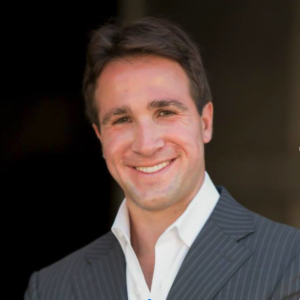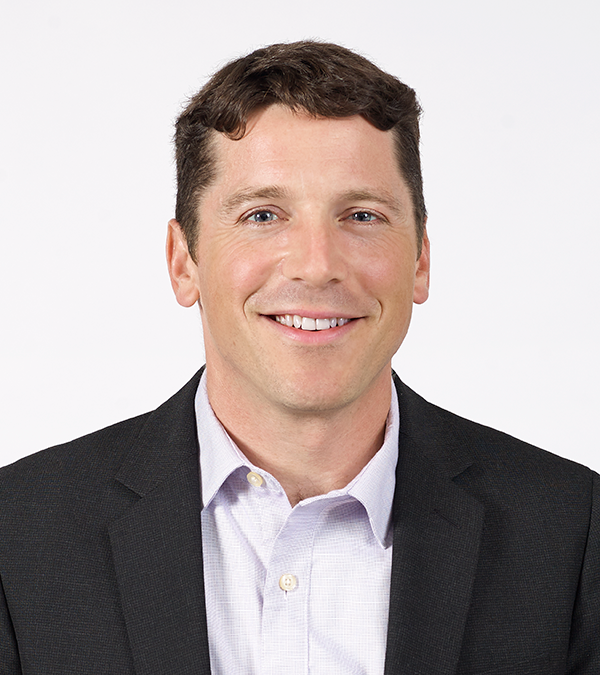I recently spoke to Mike Orr, co-founder and COO of Grapevine6, about topics business leaders should better understand, but are not often discussed on this blog, including product management and how to create a great user experience. Mike is an engineer turned entrepreur and a master on the intersection of digital and social technology with marketing and sales. Grapevine6 is a mobile first digital sales & content engagement platform for enterprise sales teams. Named a Leader in Sales Social Engagement Tools by Forrester in 2019, Grapevine6 enables sellers in all industries to develop their personal brands, cultivate new relationships and close business in minutes a week. SAP has attributed $2B+ in new pipeline revenue generated by Grapevine6 enabled sales teams since 2014.
Adam: Thanks again for taking the time to share your best advice. First things first, though, I am sure readers would love to learn more about you. How did you get here? What experiences, failures, setbacks or challenges have been most instrumental to your growth?
Mike: It’s been quite a journey to get where I am today. It certainly wasn’t planned, but in retrospect makes some sense. When I was finishing high school and trying to figure out what to do next, my mom’s boss, a stockbroker with a mining engineering degree, counselled that with an engineering degree, I could do whatever I wanted. Unfortunately, when I graduated from Chemical Engineering at the University of Waterloo, oil was down to $12 a barrel, which meant the only opportunities were on an oil rig or in the middle of nowhere. I needed to reset how I thought about my skills and what I had learned. An opportunity came through my network to join a growing management consulting firm as a process engineer. This turned out to be the first ‘progressive risk’ I took in my career and it turned out there were enough similarities in refining petrochemicals and refining business processes that I was able to fill in the gaps in a hurry. I started doing work in retail, banking and telecom across several disciplines, which was a constant challenge and often very stressful, but I learned the only times I really failed was when everything about the project was entirely new. Fortunately, there are not many problems that are entirely original or unique and having had the equivalent of 20 different jobs in five years I discovered there’s more consistency in the roles, industries, and even companies than you would expect.
When my team started moving on to other challenges, I took a leap and quit my job to start freelancing. This was a real gut-check moment. Leaving the relative security of a full-time job was questioned by a few people in my life, but my last job in consulting was helped me decide. I was consulting for Nortel and saw first-hand the retirement dreams of some great people vanish when the company went under. I realized that, in the end, you’re the only one accountable for your career and you need to actively take control. I needed a new challenge to keep moving forward. Serendipity struck when my college roommate needed strategy and project management help working on highly interactive web experiences for agencies and their clients. I had never built a consumer user experience, but I understood systems, strategy and project management and had taken courses in experience design with my MBA so it was a perfect fit!
I worked with some incredible technologists and creatives at the agency and had a great time building consumer user experiences. Of course, it wasn’t without some early challenges. I approached the projects like a strategy consultant and delivered very analytical assessments that totally missed the mark. I learned from those failures that marketing was more about storytelling than math. The story I’m most proud of during my time at Cundari was when we transformed a pain diary for kids with cancer into an epic game that enlisted the kids in the Pain Squad. Inspired by Jane McGonical’s work on the potential for games to benefit society and led by Jennifer Stinson’s research at SickKids, we created an app that helped kids collect the clues to solve pain. Actors from Flashpoint and Rookie Blue volunteered to film short video messages in full character as the kids were promoted for collecting clues. The app won numerous awards internationally and, most importantly, the kids loved it.
After wrapping up work at the agency I decided to take the biggest risk yet and start Grapevine6 with my four co-founders and make the techniques brands used to engage their audiences accessible to entrepreneurs like us!
Adam: What are the keys to creating a great user experience?
Mike: At Rotman we learned to start the design of any experience with empathy. Nothing can replace a deep understanding of your users’ needs, values, language, wants and really the context of their other experiences. One of the things I’ve learned is generally it’s better to go deeper with a fewer number of users to start and then test at scale. You’re often wrong, but it’s much easier to pivot when you have real empathy for your users. Empathy also helps you craft experience in terms of a story, as I learned in marketing, experience without story falls flat.
Another hallmark of a great user experience is adaptability. When you dive deep with a few users you quickly realize every user is different, often in nuanced ways. They have different capabilities and expectations and those will also change over time as their situations change and their competence and familiarity with the experience changes. A great user experience accommodates novices and experts and facilitates the transition.
Adam: What should leaders responsible for driving user experience focus on?
Mike: To drive user experience leaders should focus on two areas. One is creating the direct relationship between the product team (and all the supporting functions) and users. Not only does this build the empathy needed to inform experience, but also embraces the ideas of quality and continuous improvement. Everyone should feel like they own the user experience and, just as manufacturing employees can shut down a line to fix a problem, they can own fixing a broken user experience.
The second area is creating the measurement systems needed to manage the user experience. While experience problems can often only be solved in the particular, you need to understand the impact in the general.
Adam: In your experience, what are the defining qualities of an effective leader? How can leaders and aspiring leaders take their leadership skills to the next level?
Mike: I recommend aspiring and current leaders study sales as a discipline. Dan Pink put it well when he said if you’re influencing people to commit resources, including their time, you’re in sales. Broadening the lens of sales as a discipline, it involves such varied topics as game theory from economics, behavioural economics, psychology (read Robert Cialdini’s national best-seller, Influence: The Psychology of Persuasion) and even marketing. When we work with sales teams, we bring elements of marketing to the individual salesperson – building a network, creating a personal brand and providing value before asking for value in return. In our business we use sharing relevant content on social networks as the way to provide value and build a brand, but that’s just one tactic. If you want to be great at leadership, you’re going to need to be great at sales!
Adam: What are your three best tips applicable to business and civic leaders?
Mike: One of the core responsibilities of leaders is making sound decisions and those decisions rely on mental models. As leaders we don’t think enough about those mental models – the Rotman Business School calls this Thinking about Thinking. It’s one of the few ways leaders can have an impact at scale – publicly improving their thinking will elevate the quality of the thinking and decision-making of their organization. I recommend reading about decision bias and achieving a base level of data literacy including statistics as a starting point for thinking about your thinking.
In the software industry, companies talk about eating their own dog food (although I prefer SAP’s expression – drinking their own champagne!), which means they use the apps they build as a way of developing empathy and finding bugs in the system. All leaders should find a way for their teams to experience the services they deliver. One option is to require employees to ‘ride along’ with the service delivery team regularly to understand the experience and develop empathy for your clients and constituents.
The corollary tip to deep empathy is to take a broader view through data. Empathy helps drive innovation and a level of care, but one experience does not make a trend. Data analysis is needed to drive continuous improvement and measurement of success. Always remember that even a ‘scientific’ approach to data analysis is still subject to cognitive bias so find ways to challenge your thinking and assumptions.
Adam: What are your three best tips applicable to entrepreneurs?
Mike: When you’re first starting out as an entrepreneur recognize that you are your company. Your company doesn’t have a brand or reputation yet so your personal brand better be great. Focus on building your personal brand by connecting with respected industry leaders and engaging in public discussions. You can start small by sharing articles and writing a comment or just commenting on others’ posts. Getting into the habit of engaging with content is also great practice for when you’re building your company’s brand.
To succeed as an entrepreneur requires a pretty substantial amount of resilience. Very few people succeed early and certainly not every decision is the right one. In fact, one of the big challenges of building a company is that it’s often hard to tell if the decisions you’re making are the right ones. I advise entrepreneurs to continuously build and engage their networks to get guidance and feedback on their ideas and decisions. Those networks are also invaluable in getting your company off the ground as a source of customers, employees and strategic focus.
Finally, it’s important to realize that entrepreneurship can be a pretty lonely and isolating road. I’ve found that listening to the stories of other entrepreneurs creates a sense of shared experience that connects you with other people. I’ve been listening to NPR’s How I Built This for some time because there’s always something in the story that’s relatable – a moment of uncertainty, a big gamble, or a serendipity – regardless of the industry, we all follow similar stories. And when you’re faced with a decision or a setback it helps to know that others have been there before and made it through.
Adam: What are your three best product management tips?
Mike: I think it’s fundamental to recognize product management as a creative exercise. That’s an important acknowledgment because if you’re doing it right, it’s going to be uncomfortable at times. You need to embrace the tension between competing stakeholders to find creative solutions that ultimately lead to a better product and user experience.
I also remember a Yahoo product manager telling me that their own studies had shown how wrong the initial predictions of user behaviour were. The lesson here was that you always have to measure the impact of changes as you’ll always be surprised with the result. And that’s fine because it’s really how you listen to that feedback and data to find creative solutions that matters. One technique to solve those problems is to convene a product counsel to review results and provide creative options for solutions, a technique I learned from Ed Catmull’s book Creativity Inc. that describes this approach for to reviewing films in development at Pixar.
Another powerful idea in product management is to take business strategy concepts and scale them down to your product. One of the best I’ve found is McKinsey’s 3 Horizons model where businesses seek to balance initiatives that deliver in the short, medium, and long-term horizons. I think this is a useful lens to balance the product backlog and allocate resources in the short term across a long horizon. Sometimes this may mean splitting the development teams into maintenance, new product development and a labs group, but there’s value in having the development team working across those horizons if you can. We’ve seen long-term experiments have short-term impacts.
Adam: What is the single best piece of advice you have ever received?
Mike: My first job out of school was with a management consulting company in Toronto. The owner Stevan Ralph was an interesting character who actually started the company to fund his continuous education. His advice was to continuously stretch outside your comfort zone. In other words, find ways to make yourself uncomfortable in your work by taking smart risks. It’s like saving money for retirement, every task you take on adds directly to your capabilities by allowing you to practice a new skill or gain new knowledge, but also you actually get better at taking risks. I think a lot of people get stuck in jobs, relationships, or ways of thinking because they fear change. Getting comfortable with being uncomfortable has made the biggest difference in my career and often guided me to the right decision.
Adam: What is one thing everyone should be doing to pay it forward?
Mike: The one thing I’ve benefited from most and have done my best to pay forward is to be generous with my time in providing guidance and advice. The only reason I got into engineering was that my mom’s boss was an engineer who ended up running a stock brokerage and his advice was if you don’t know what you want to do, you can do whatever you want with an engineering degree. That worked out pretty well and mainly gave me permission to acknowledge that I didn’t know what I wanted to do. Over the years I’ve gotten better at asking for help along the way and certainly wouldn’t be where I am without a lot of guidance from my peers, mentors and friends. I’ve tried to pay that back by mentoring others and providing some of my time to the next generation. As you progress you realize that guiding others isn’t just an altruistic act. It is an interesting, educational experience that shapes your thinking and values as a leader.









